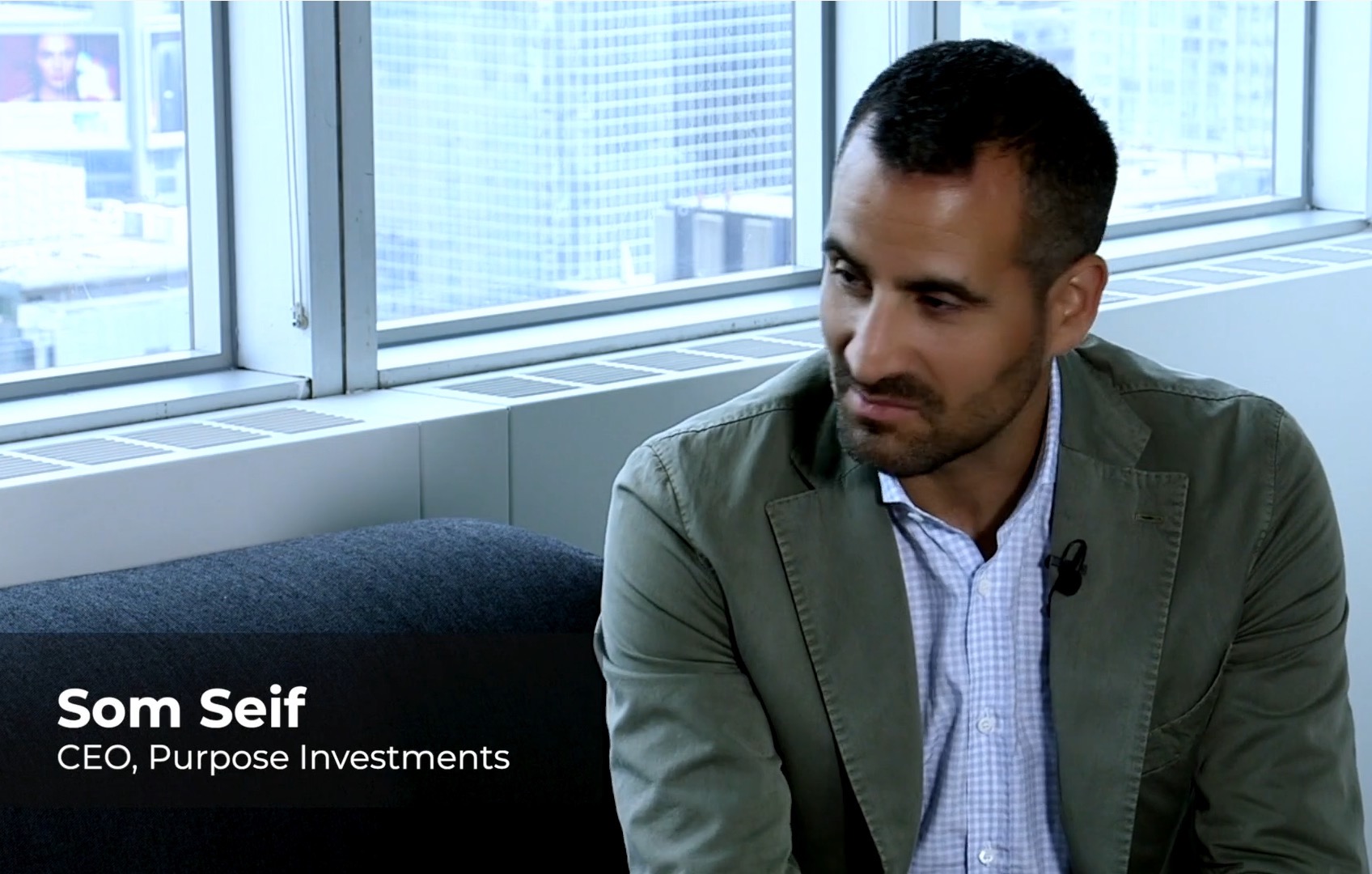by Franklin Templeton Investments blog, Franklin Templeton Investments
Those expecting a sleepy August for equity markets were probably shocked at the volatility we saw across global equity markets last week, as weak macro data and US Treasury yield-curve inversion raised recessionary fears. In addition, the prospect of a fresh election in Italy also rattled brittle investor confidence. Markets did steady towards the end of the week, and with that, the moves on the week ultimately turned out to be less severe than early on.
The Digest
The see-sawing for equity markets was extreme last week, with the Standard & Poor’s 500 Index falling 3% on Wednesday alone.1 The index experienced moves of over 1% on four days last week.
Volatility in Europe was not quite as extreme, but we did see the Eurostoxx 600 Index decline 1.7% on Wednesday.2
It is important to remember this is peak summer holiday season for many market participants—particularly in Europe—so moves in markets can be exaggerated because of light volumes and the lack of conviction investors.
We feel it’s important to try and understand the causes of the recent market volatility.
Weaker Macro Data/Trade-War Fears
 Weak economic data from both Germany and China at the start of last week seemed to play a part in weakening investor confidence.
Weak economic data from both Germany and China at the start of last week seemed to play a part in weakening investor confidence.
Germany’s second-quarter gross domestic product (GDP) growth contracted, coming in at -0.1%.
In China, industrial output rose 4.8% year-on-year (versus a consensus expectation of +6%), while retail sales expanded +7.6% (versus a consensus expectation of +8.6%). Fixed-asset investment slowed to +5.7% (versus a consensus expectation of +5.8%) in the first seven months of the year.
In our view, the fact that two of the world’s economic powerhouses came out with weak data is a major factor in understanding the market weakness last week. The reaction suggests to us that the ongoing trade dispute between the United States and China remains an investor concern.
There was some positive news on the US/China trade tensions at the start of the week, as US President Donald Trump delayed roughly 60% of the tariffs that were scheduled to take effect September 1. The items included most consumer goods; Trump apparently wanted to ensure the US consumer was not negatively impacted in the run-up to the holiday season.
However, the rhetoric from China remained hard. Beijing insisted it was still planning counter measures to US tariffs. In addition, on Tuesday the Chinese authorities allowed the yuan to weaken further, another sign they appeared happy to challenge Trump. This also unnerved markets, as equity indices lurched from one headline to the next.
Later in the week, Trump tried to strike a more positive tone, stating he thinks any trade war with China would be “fairly short” and “China very much wants to make a deal”.
Nonetheless, we think the impact of the weak data and trade-war concerns earlier in the week played a part in the bond market moves that really spooked financial markets.
Yield Curve Inversion
 On Wednesday, the US 10-year and two-year Treasury yield curves inverted, meaning the long-term debt has a lower yield than the short-term debt. In addition, the US 30-year Treasury yield fell below 2% for the first time ever.
On Wednesday, the US 10-year and two-year Treasury yield curves inverted, meaning the long-term debt has a lower yield than the short-term debt. In addition, the US 30-year Treasury yield fell below 2% for the first time ever.
This was the first time an inversion had happened since June 2007. In the past, an inverted yield curve has been an indicator that an economic recession lies ahead.
As investors took notice of this potential harbinger, equity markets declined on Wednesday as investor expectations of a recession appear to be rising.
However, some argue fears of a recession are overdone, as the United States continues to see a healthy labour market. Last week’s release of stronger-than-expected retail sales figures also suggests the US consumer remains robust.
For his part, President Trump is focused on pressuring the Federal Reserve (Fed) to cut rates again to prevent any potential economic downturn.
With the moves we are seeing in the global bond markets, it is worth once again highlighting a trend we are seeing: an increasing number of bonds in negative-yield territory. Now there are nearly US$16 trillion of bonds with negative yields. A number of central banks have negative interest rates and/or quantitative easing programmes, and we’ve also seen a flight to safety.
This is a unique situation for markets and there is some question whether signals that worked historically are as reliable in these uncharted territories.
After such a tumultuous week, it’s timely that the US Fed’s Jackson Hole Symposium takes place this weekend in the US state of Wyoming. The annual central-banker conference should give us some insight into how Fed Chair Jerome Powell and others are facing these uncertain times. In addition, the minutes from the last Fed and European Central Bank (ECB) meetings will be released this week. These will be closely watched for any clues about the thinking of monetary policymakers.
Last Week
Europe
European markets closed last week lower across the board, but losses were more muted than had been feared earlier in the week. Italy was the outperformer, managing to close the week flat, while the UK was the underperformer.
The uncertain macro landscape once again drove defensive rotation, with utilities and food & beverages the outperformers.
Cyclical stocks were hit, with the trade-sensitive autos the week’s major losers. European government bond yields continued to fall, a reflection of current investor risk aversion. The flattening yield curve hit banking stocks.
The UK yield curve inverted after inflation data from the region came in better than expected, pushing short-term rates higher and leading to recession fears.
There was little incrementally new in terms of Brexit developments last week, but the pound got a lift when the Labour Party finally announced plans to challenge UK Prime Minister Boris Johnson’s government and avoid a no-deal Brexit on Parliament’s return on September 3 from its summer recess. The prospect of anything helping the UK move away from no-deal helped the pound recover a modicum of its lost ground, despite the uncertainty than a no-confidence vote and potential election could bring.
Environmental issues appear to be the main topic of this week’s G7 Summit. But ahead of the Summit, Johnson will meet with French President Emmanuel Macron on Thursday in order to discuss Brexit. He also has plans to meet German Chancellor Angela Merkel on the same topic. We’ll be watching out for any further headlines on this.
In Italy, there were some hurdles for the League party’s leader Matteo Salvini, who had called for a no-confidence vote at the end of the previous week.
His coalition partners Five Star as well as by the Democratic Party blocked the move. Prime Minister Giuseppe Conte is set to address the senate on Tuesday, which may still lead to a no- confidence vote. In the event such a vote passes, President Sergio Mattarella will have to decide whether to work with party leaders to form an alternative coalition or to call elections.
Many observers expect Mattarella to lean towards the first option initially, as he will not want to jeopardize the passing of the 2020 budget. The potential to avoid snap elections helped mute losses in what was a volatile week for Italian equities, and Italian bond yields moved lower towards the end of the week despite the uncertainty.
The United States
US equities also felt the pressure, but managed to end the week off their lows thanks to some stimulus hopes towards the end of the week. As we saw in Europe, the defensive sectors outperformed, while autos, banks and energy names were the worst hit.
Global macro data remained on the weaker side, but there were some signs of resilience from the US consumer. Retail sales came in better than expected, and we saw better numbers from retailing bellwether Walmart. Inflation data was also stronger, with July consumer price index (CPI) data coming in higher than expected year-on-year. The latter could raise issues for the Fed ahead of its September meeting.
Asia Pacific (APAC)
Markets in the APAC region were mostly lower. Mainland China was the bright spot, as the delay of the imposition of new US tariffs and a Peoples Bank of China (PBOC) liquidity injection boosted local equities.
Japanese equities fell, but Australian equities were the week’s underperformers as the labour market failed to show signs of tightening despite the Reserve Bank of Australia’s (RBA) dovish interest-rate action. Mining names also weighed on investor sentiment as the underlying iron ore price weakened amid falling demand from China.
South Korean equities were lower for the fourth consecutive week, even as President Moon Jae-In attempted to de-escalate trade tensions with Japan, urging Tokyo to “return to dialogue and cooperation”. Tensions with North Korea remained elevated, as North Korea conducted a further set of weapons testing in protest against South Korea’s joint military exercises with the United States.
Week Ahead
It’s a quieter week for macro and earnings but set to be an eventful one for central banks and global politics. Equities are trading higher this morning as we see headlines suggesting Germany is planning a €55 billion stimulus package.
Macro
- US: Existing home sales (Wednesday), Initial jobless claims (Thursday), New home sales (Friday)
- Europe: Euro-area final CPI (Monday), Euro-area Consumer Confidence (Thursday)
- Asia: Japan CPI (Friday)
Politics
- Italian PM Conte addresses parliament on Tuesday, ahead of a potential no-confidence vote.
- The G7 leaders summit takes place in Biarritz over the weekend, with Boris Johnson to meet French and German leaders to talk Brexit ahead of the main event.
- Trade rhetoric between China and the United States will continue to be key; we will also be watching tensions between Japan and South Korea.
Central Bank Events
- As we look for clues about the next Fed move, its Jackson Hole, Wyoming, meeting and the speakers there will be key to watch. Minutes from the Fed’s last meeting will be released ahead of the meeting.
- The ECB publishes its latest policy meetings account on Thursday.
Views You Can Use
Insight from Our Investment Professionals
Central Bank Easing in Focus in July
The US Federal Reserve’s recent interest rate cut will likely be positive for emerging markets overall, given the importance of the US economy as a growth driver, according to our emerging markets equity team. The team shares its view of this another events shaping emerging markets today. Read More.
Why European Fixed Income Can Still Have Value Even with Negative Yield
Amid much discussion of the inversion of the US yield curve, there’s been relatively little attention paid to the situation in Europe. John Beck, Franklin Templeton’s Director of Fixed Income, London, explains the reasons for a likely continued flattening of the yield curve in Europe are very different from the drivers on the other side of the Atlantic. And, as most commentators brace for further interest rate cuts, Beck argues there’s still value to be found in European fixed income, even with negative yields. Read More.
US Market Volatility and Sleepless Summertime Nights
The summer of 2019 has given equity investors a lot of things to worry about. Yet, Franklin Equity Group’s Grant Bowers says the health of the US equity bull market shouldn’t be one of them—at least not now. He discusses the biggest growth driver for both the US and global economy and explains why he likes the long-term prospects for select companies in the health care and technology sectors. Read More.
The inversion of the Treasury yield curve has recently gotten a lot of attention in the financial press as being a harbinger of economic malaise ahead. Our Fixed Income CIO Sonal Desai says these conclusions are misguided. Read More.
For timely investing tidbits, follow us on Twitter @FTI_Global and on LinkedIn.
Important Legal Information
This article reflects the analysis and opinions of Franklin Templeton’s European Trading Desk as of August 19, 2019, and may vary from the analysis and opinions of other investment teams, platforms, portfolio managers or strategies at Franklin Templeton. Because market and economic conditions are often subject to rapid change, the analysis and opinions provided may change without notice. An assessment of a particular country, market, region, security, investment or strategy is not intended as an investment recommendation, nor does it constitute investment advice. Statements of fact are from sources considered reliable, but no representation or warranty is made as to their completeness or accuracy. This article does not provide a complete analysis of every material fact regarding any country, region, market, industry or security.
Nothing in this document may be relied upon as investment advice or an investment recommendation.
Data from third-party sources may have been used in the preparation of this material and Franklin Templeton (“FT”) has not independently verified, validated or audited such data. FT accepts no liability whatsoever for any loss arising from use of this information and reliance upon the comments, opinions and analyses in the material is at the sole discretion of the user. Products, services and information may not be available in all jurisdictions and are offered by FT affiliates and/or their distributors as local laws and regulations permit. Please consult your own professional adviser for further information on availability of products and services in your jurisdiction.
What Are the Risks?
All investments involve risk, including possible loss of principal. The value of investments can go down as well as up, and investors may not get back the full amount invested. Stock prices fluctuate, sometimes rapidly and dramatically, due to factors affecting individual companies, particular industries or sectors, or general market conditions. Bond prices generally move in the opposite direction of interest rates. Thus, as prices of bonds in an investment portfolio adjust to a rise in interest rates, the value of the portfolio may decline. Investments in foreign securities involve special risks including currency fluctuations, economic instability and political developments. Investments in developing markets involve heightened risks related to the same factors, in addition to those associated with their relatively small size and lesser liquidity.
Past performance is not an indicator or guarantee of future performance.
Links to External Sites
Franklin Templeton Investments is not responsible for the content of external websites.
The inclusion of a link to an external website should not be understood to be an endorsement of that website or the site’s owners (or their products/services).
Links can take you to third-party sites/media with information and services not reviewed or endorsed by us. We urge you to review the privacy, security, terms of use, and other policies of each site you visit as we have no control over, and assume no responsibility or liability for them.
1. Indices are unmanaged and one cannot directly invest in them. They do not include fees, expenses and sales charges. Past performance is not an indicator of future performance.
1. Ibid.
This post was first published at the official blog of Franklin Templeton Investments.














